As metal allergy awareness increases, and as people become increasingly conscious of the materials surrounding them, a pertinent question arises: Is stainless steel hypoallergenic, or can we experience a stainless steel metal allergy? Join us on a journey to unravel the mystery behind stainless steel’s hypoallergenic reputation and the potential allergic reactions that may be lurking beneath the surface.

As an Amazon Associate, I may get compensation for qualifying purchases.
Table of Contents
Is stainless steel hypoallergenic?
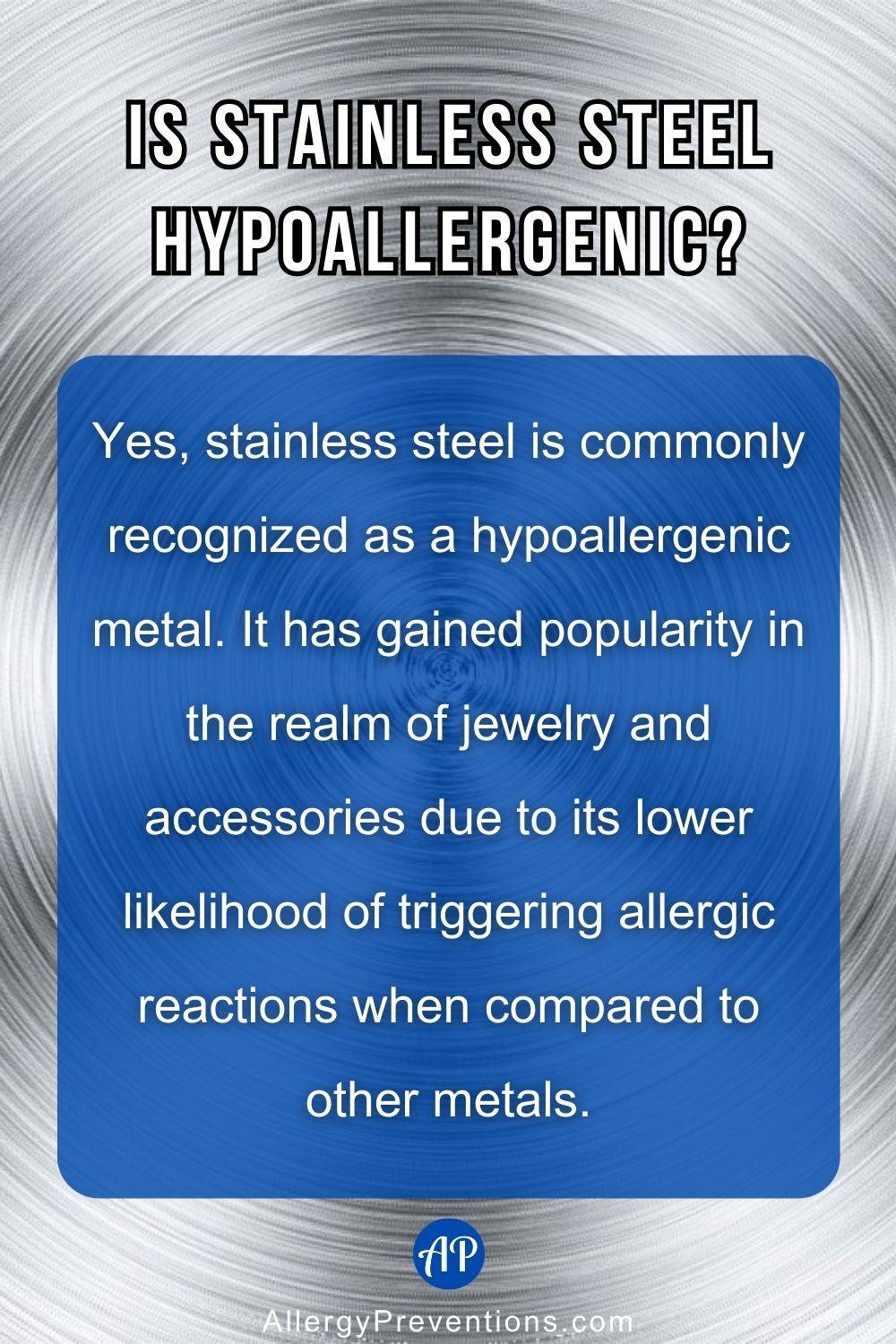
Yes, stainless steel is generally considered a hypoallergenic metal. It is a popular material for jewelry and accessories because it is less likely to cause allergic reactions compared to materials like nickel or brass. However, individuals with extremely sensitive skin may still experience some irritation, as reactions can vary from person to person.
If you have known allergies to specific metals, it’s always a good idea to test a small area of your skin with the stainless steel item before wearing it for an extended period.
Can you be allergic to stainless steel?
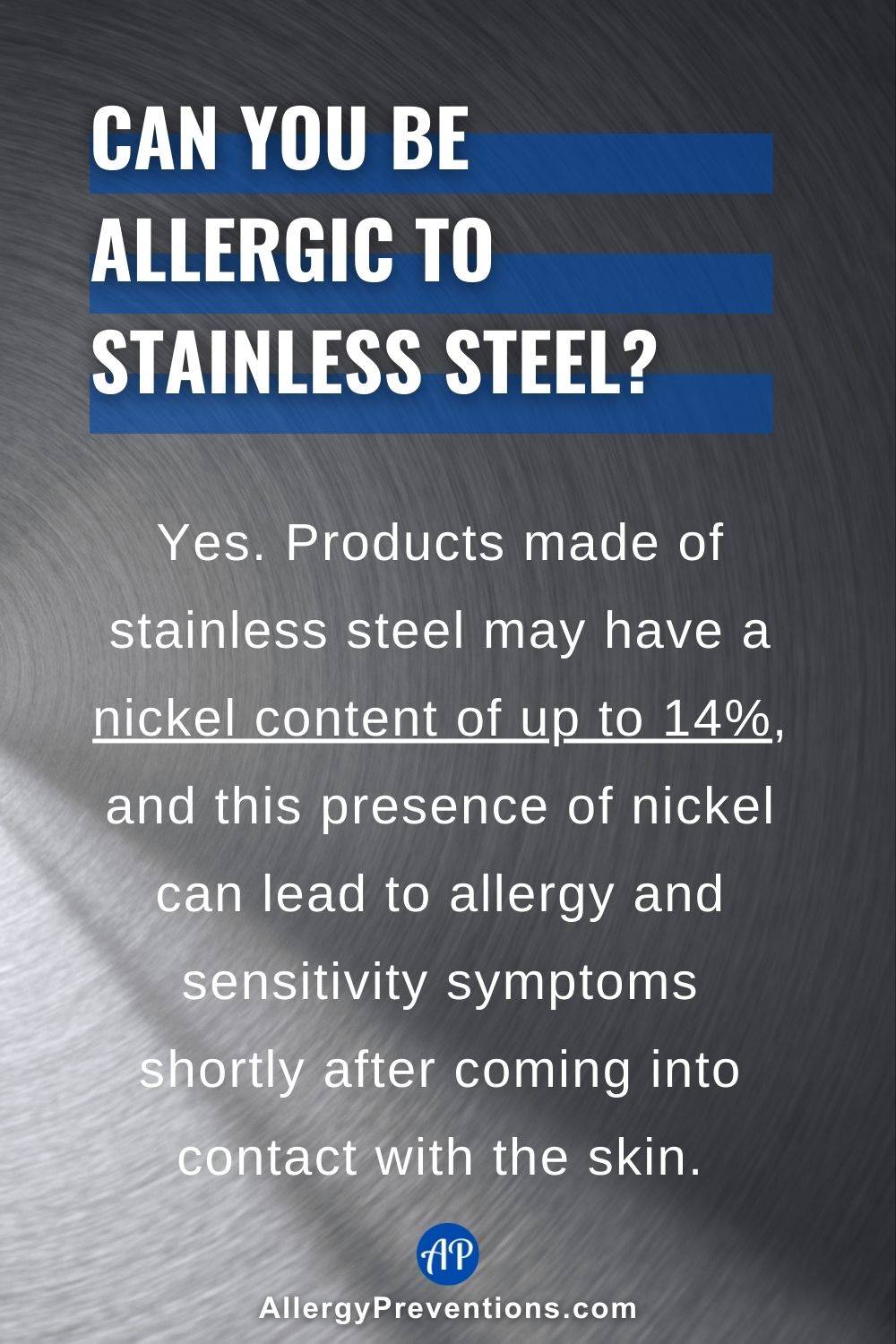
Yes, it is possible to be allergic to stainless steel. A component of stainless steel is nickel, which is the usual culprit in causing allergic reactions. Stainless steel products can contain up to 14% nickel, this nickel content can cause allergy and sensitivity symptoms shortly after becoming in contact with the skin.
Stainless Steel Metal Allergy Symptoms
Nickel is a common component in stainless steel, and some individuals may experience symptoms when their skin comes into contact with items made of stainless steel. Here are common symptoms of stainless steel metal allergies:
- Blistering: In more severe cases, blistering or the formation of small fluid-filled sacs on the skin may occur.
- Discomfort: Some individuals may experience discomfort or pain in the affected area.
- Itching: Itching or irritation of the skin can occur, especially in areas where the stainless steel is in direct contact.
- Rash: A rash may develop, characterized by small bumps or red patches on the skin.
- Redness: Skin that comes into contact with stainless steel may develop redness.
- Swelling: Swelling of the affected area, particularly around the contact point with the stainless steel.
It’s important to note that not everyone is sensitive to stainless steel, and reactions can vary in severity.
If someone experiences persistent or severe symptoms, it’s advisable to consult with a healthcare professional for guidance and to determine the most appropriate course of action.
Causes of Stainless Steel Allergy
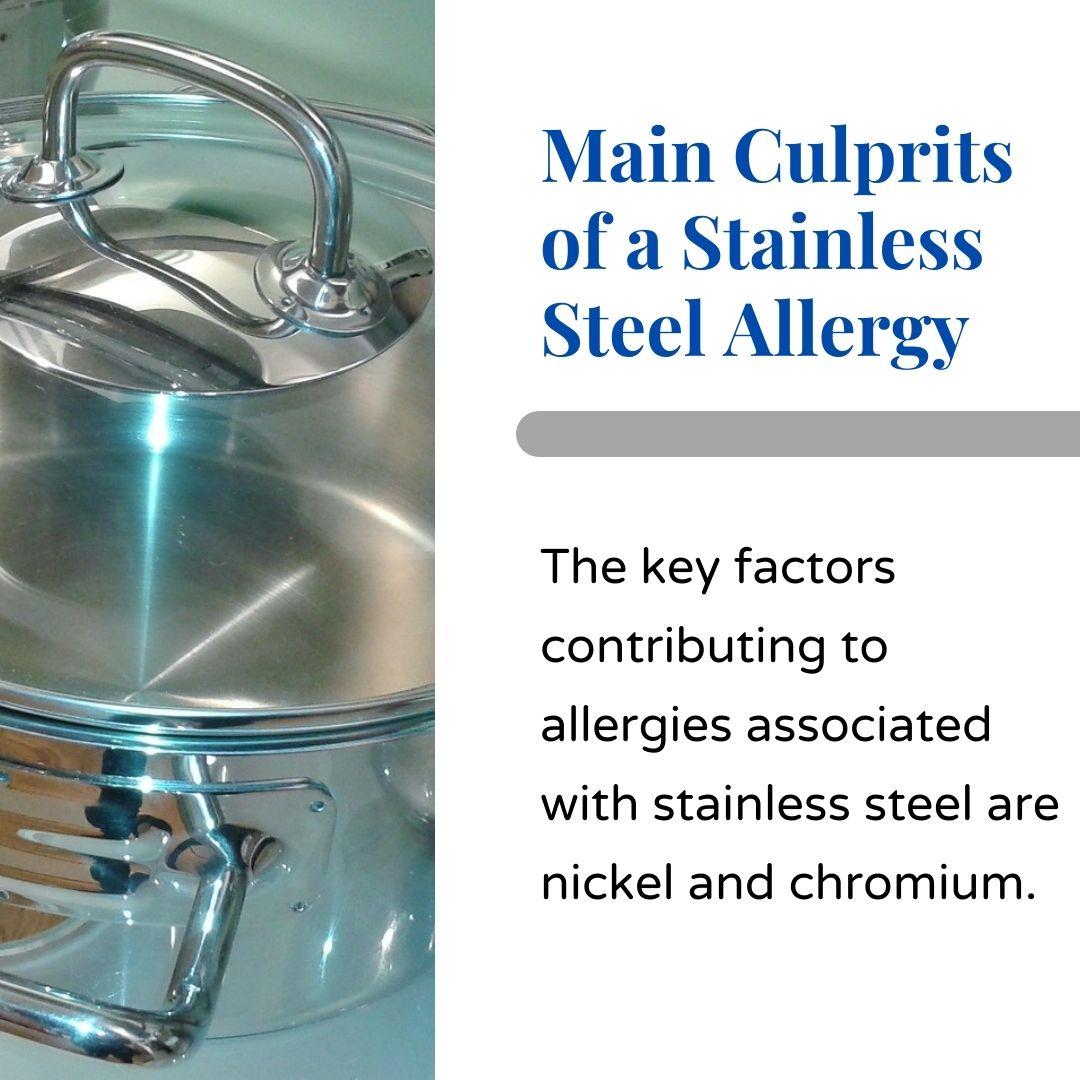
The primary causes or triggers behind stainless steel allergies are nickel and chromium. Nickel, a common metal allergen, can cause skin irritation, while chromium sensitivity may lead to respiratory issues.
Nickel
Nickel, commonly used in various metal alloys, has the potential to cause allergic reactions upon contact with the skin. Individuals with nickel allergies may experience symptoms such as redness, itching, and rashes when exposed to nickel-containing materials. This is particularly relevant in the context of stainless steel jewelry, accessories, or everyday items where nickel may be present in the alloy.
Chromium
Chromium, while less common as an allergen compared to nickel, can also contribute to adverse reactions. Sensitivity to chromium in stainless steel may manifest as respiratory problems, particularly if the material is inhaled. This is a concern in industries where stainless steel is processed or used extensively, as workers may be exposed to chromium particles that could lead to respiratory discomfort or exacerbate existing respiratory conditions.
The Most Hypoallergenic Stainless Steel
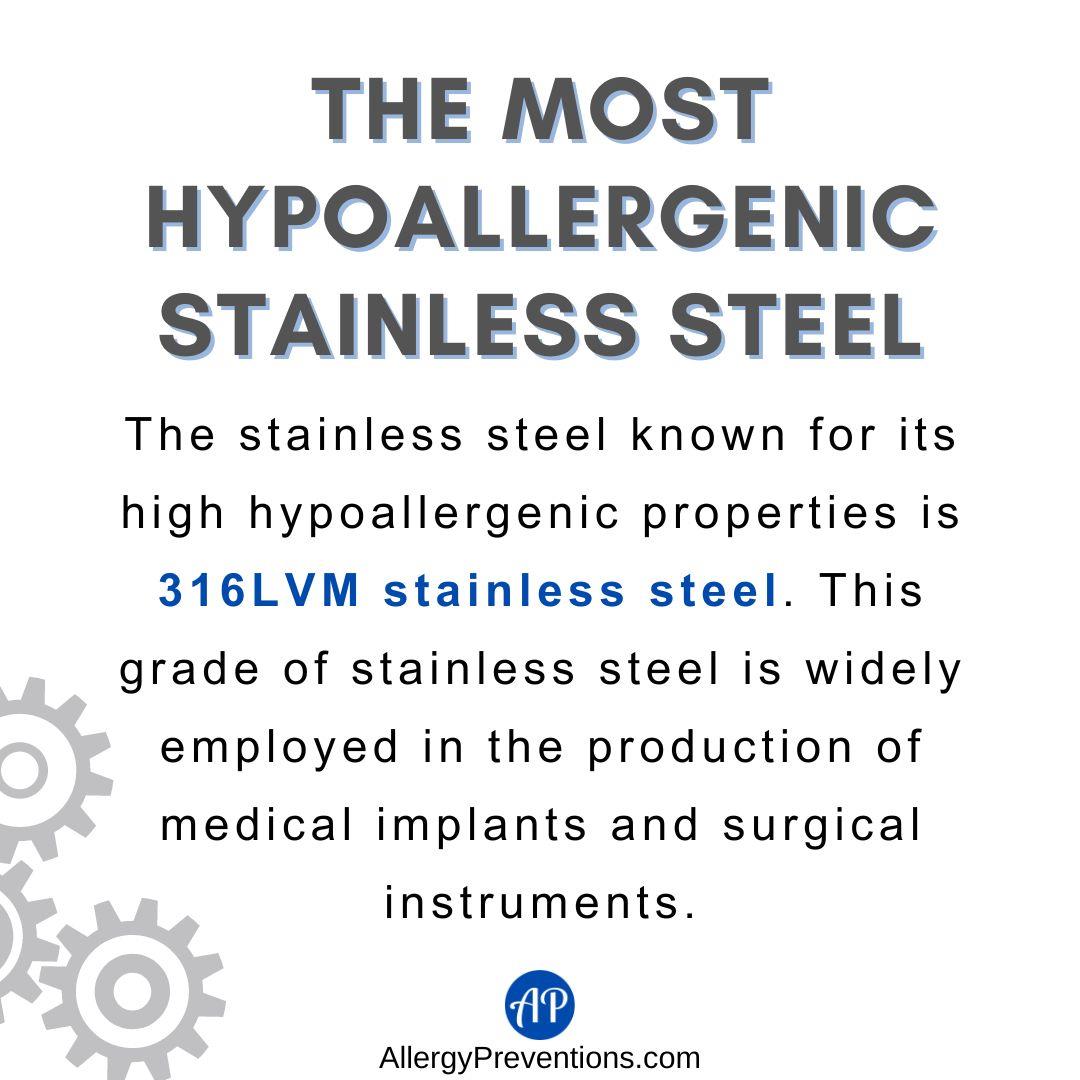
The most hypoallergenic stainless steel is 316LVM stainless steel. 316LVM stands for “316 Low Carbon Vacuum Melt,” and it is a specific grade of stainless steel that is commonly used for medical implants and surgical instruments.
Here is an example of the ingredients found in 316 LVM stainless steel:
- Iron (60-65%)
- Chromium (16-18%)
- Nickel (10-14%)
- Molybdenum (2-3%)
- Manganese (Mn): 2% maximum
- Silicon (Si): 1% maximum
- Carbon (C): 0.03% maximum
- Phosphorus (P): 0.045% maximum
- Sulfur (S): 0.03% maximum
This is just an example of what 316 LVM hypoallergenic stainless steel may contain. Different manufacturers may include different ingredients at different percentages and still meet the criteria in the ASTM standard.
What about Stainless Steel 316 & 316L?
Stainless steel 316 and 316L are recognized as hypoallergenic, although they are classified as slightly lower grades compared to 316LVM. All 316 stainless steel grades surpass those of the 400 and 200 series for skin contact standards. When opting for jewelry, it is advisable to opt for 316LVM or select an alternative hypoallergenic metal that is nickel-free.
Testing for a Stainless Steel Metal Allergy

To determine if you have an allergy to stainless steel, your doctor usually performs a patch test, lymphocyte transformation test, or the MELISA test. With the progress in medical technology, there are now additional testing alternatives, including an at-home test. Here’s an overview of each testing method:
Allergy Patch Testing: involves the application of small amounts of allergenic metals onto patches, which are subsequently placed on the individual’s back. The skin under the patch is monitored for any allergic reactions.
Lymphocyte Transformation Test (LTT): This blood test assesses the responsiveness of white blood cells to specific metal allergens, offering insights into an individual’s immune reaction to particular metal ions.
Memory Lymphocyte Immunostimulation Assay (MELISA): A sophisticated blood test that examines how the immune system responds to different metal allergens.
Sensiband Wristband: A wristband containing the suspected metal is worn, and potential reactions are monitored after wearing it for about a week. Sensiband is available without a prescription and can be bought over the counter.
Sensiband® has a few different metal allergy test kits, for a suspected stainless steel allergy, I recommend you check out their piercings and jewelry test kit on Amazon. This kit tests stainless steel, nickel, chromium, and copper.
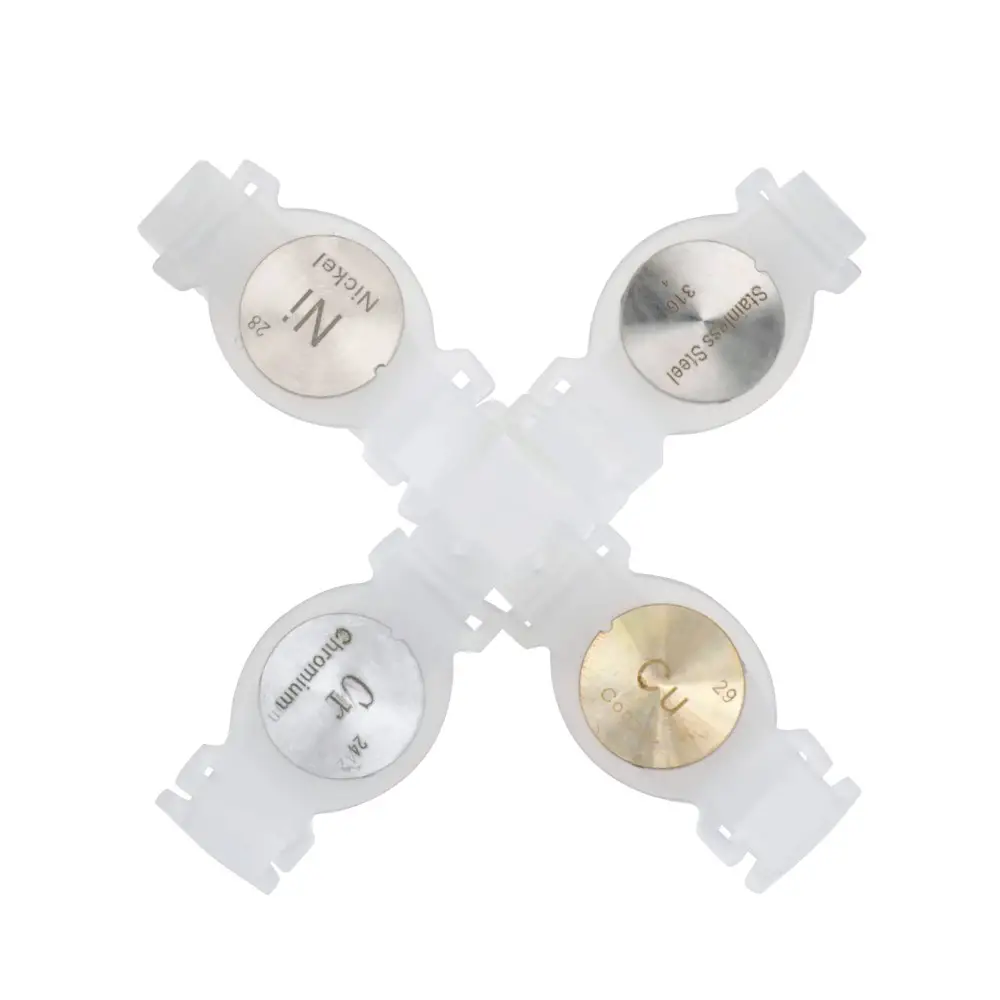
Purchasing Hypoallergenic Stainless Steel Products
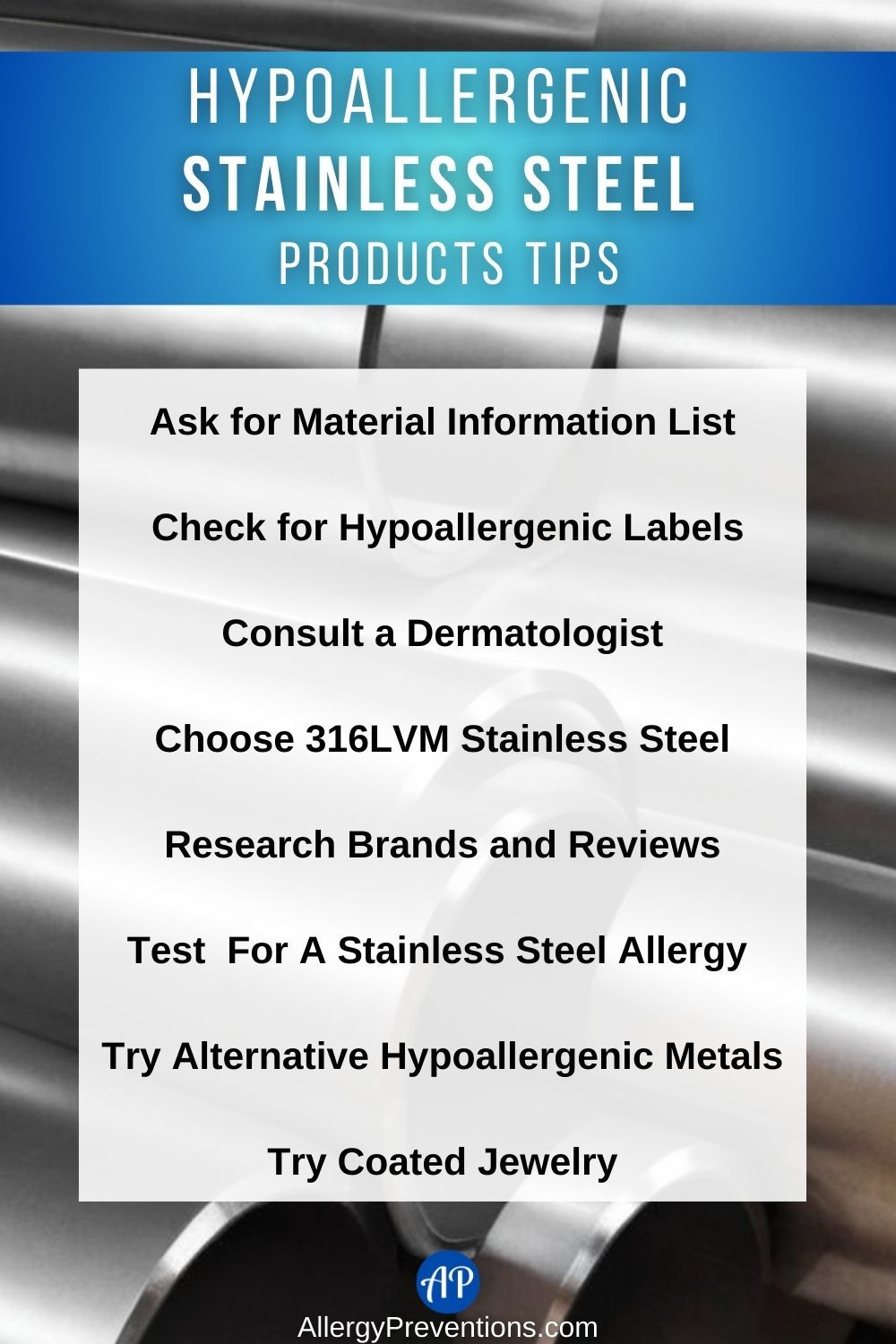
If complete avoidance of stainless steel products is not feasible for you, consider the following guidelines to make well-informed decisions and minimize the risk of experiencing an allergic reaction:
- Ask for Material Information: If the product is not clearly labeled, don’t hesitate to ask the seller or manufacturer about the material used. This will help you confirm whether it contains any allergens.
- Check for Hypoallergenic Labels: Look for jewelry that is specifically labeled as hypoallergenic. This indicates that the metal used is less likely to cause an allergic reaction.
- Consult a Dermatologist: If you have a severe allergy or persistent skin reactions, it’s advisable to consult with a dermatologist. They can guide suitable materials for your specific skin sensitivities.
- Choose 316LVM Stainless Steel: Sometimes called “surgical grade” stainless steel is often used in medical implants and is less likely to cause allergic reactions.
- Look for Alternatives: If you find that even hypoallergenic stainless steel causes a reaction, consider alternative materials such as titanium, sterling silver, or gold, which are often better tolerated by those with metal allergies.
- Research Brands and Reviews: Check reviews and reputation of product brands. Some brands may specialize in hypoallergenic or allergy-friendly jewelry.
- Test with Small Pieces: Before making a significant purchase, consider buying a small piece of stainless steel jewelry to test your skin’s reaction. Wear it for a short period and monitor for any signs of irritation.
- Try Coated Jewelry: Some stainless steel jewelry is coated with materials like gold or silver, which can help prevent reactions until the coating wears off.
Remember, everyone’s skin reacts differently, so it’s essential to be attentive to how your skin responds to different materials.
Key Takeaways
Stainless steel may be deemed hypoallergenic by some individuals while causing metal allergies in others. The primary concern with “hypoallergenic stainless steel” lies in its nickel content, a metal often responsible for triggering allergies and sensitivities.
To effectively manage metal reactions, it is beneficial to identify specific metal allergies through tests conducted by a doctor or, by checking out the Sensiband for home testing.

